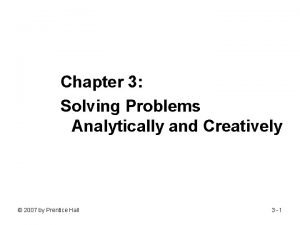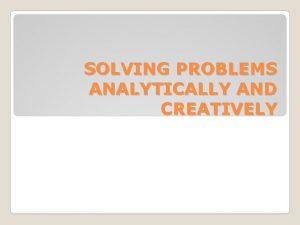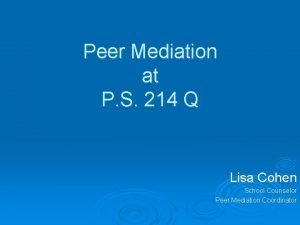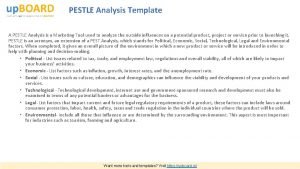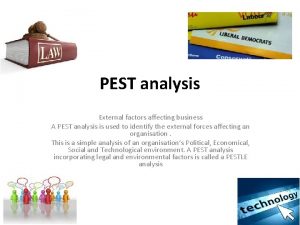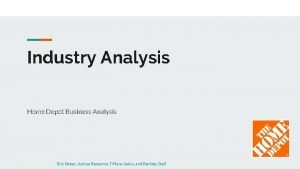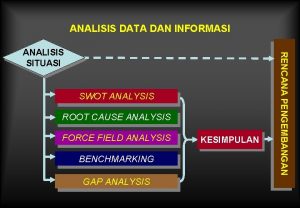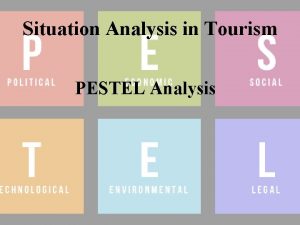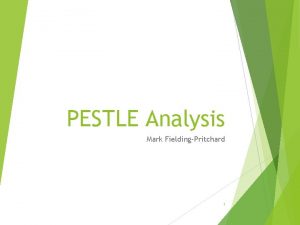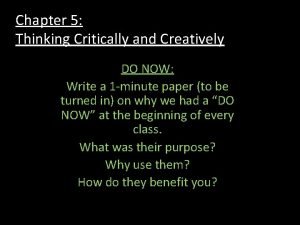PESTLE Analysis Thinking Creatively PESTLE Analysis The origins









- Slides: 9

PESTLE Analysis

Thinking Creatively • PESTLE Analysis • The origins of PESTLE are very elusive, but an embryonic form of it appears in a 1967 book by Francis J. Aguilar. • PESTLE is a way of looking strategically at some factors that help in the creation of a design. • The name PESTLE is an initialism (or acronym) for the factors to consider, and these supersedes previous conceptualisations such as PEST, PESTE, and SLEPT.

Thinking Creatively • PESTLE – P: Political – E: Economic – S: Social – T: Technology – L: Legal – E: Environment

Thinking Creatively • P: Political – What political factors are relevant to this design? – This can be as general as the political system of the country that the design is destined. – More specifically it can be thought of as considering how much government influence and intervention applies to this design. – It could consider things such as trade restrictions or labour laws. – This can also be used to look at the political factors within an organisation or group undertaking a design – issues wroth considering include the rational fallacy, subjective meanings, and the nature of power within the group.

Thinking Creatively • E: Economic – What economical factors are relevant to this design? – This can be looked at in the general sense of economics, and looking at factors such as inflation, interest rates, etc. – It can also look specifically look at costs from the perspective of costs associated with this specific design – how much will the raw materials cost? What other associated costs will there be? How much can the design be sold for? – Other money related issues that apply include, such as – do we have enough money to achieve this design? Have we considered more expensive or cheaper approaches to this? etc.

Thinking Creatively • S: Social – What social factors are relevant to this design? – This factor can consider things like the cultural issues that can either constrain or enhance a specific design. – It can also look at things like language issues, population distributions in countries, average ages of populations, gender balance, and education levels and literacy levels within populations. – It is imperative that designs take into account colours, shapes or names that have particular societal resonances within different groups of people. – This factor can also allow designers to consider moral issues such as considering do toy guns promote violence or do dolls encourage a stereotypical view of women.

Thinking Creatively • T: Technology – What technological factors are relevant to this design? – Technology can range from Low-Tech to Medium-Tech to High-Tech and can refer to any tool that helps a person to achieve a task. – Are there technological innovations that are worth considering or investigating, for example, are there materials science innovations or new computer technologies that might be used as part of this design? – Is it possible to license the needed technologies from other organisations? – Does the technology complement and support the design or is an impediment to the use of the design?

Thinking Creatively • L: Legal – What legal factors are relevant to this design? – There a range of laws that may apply: anti-trust laws, health and safety laws, copyright laws, equality laws, etc. – What are issues associated with Intellectual Property rights (registered and unregistered)? – What are the potential litigation or arbitration issues? – Is it worth contacting the Irish Patents Office? – Are there any jurisdictional issues? – Do we need to review the notion of Universal Design as defined in Ireland’s 2005 Disability Act, and the 2006 United Nations Convention on the Rights of Persons with Disabilities

Thinking Creatively • E: Environment – What environmental factors are relevant to this design? – What are the ecological and environmental considerations that must be taken into account? – What are the range of environments in which this design will be used, for example, will different environments have variable air quality, variable levels of noise, and variable lighting, – What are the recycling issues and is there biodegradable potential for these designs? – Will this design be contributing to making Ireland more green and if so will it be possible to market and sell this design as a “green business” – Will it be possible to get LEED certification?
